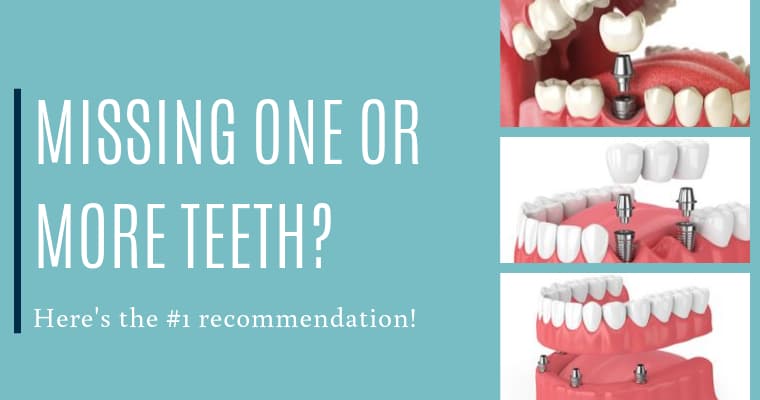Dental Sense Fundamentals Explained
Table of ContentsDental Sense Can Be Fun For AnyoneThe Only Guide for Dental SenseUnknown Facts About Dental SenseOur Dental Sense Diaries
are clinical tools surgically dental implanted right into the jaw to bring back an individual's capability to chew or their appearance. They supply support for artificial (phony) teeth, such as crowns, bridges, or dentures. When a tooth is shed due to injury or illness, a person can experience complications such as fast bone loss, faulty speech, or changes to eating patterns that lead to pain.Dental implant systems include a dental implant body and oral implant abutment and might also consist of an abutment fixation screw. Dental implant vs bridge. The dental implant body is operatively inserted in the jawbone in area of the tooth's origin. The dental implant joint is generally affixed to the implant body by the abutment fixation screw and expands with periodontals into the mouth to support the attached synthetic teeth
(https://www.huntingnet.com/forum/members/dentalsense1.html)Structure of The Oral Implant System picking dental implants, speak with your oral copyright regarding the possible benefits and threats, and whether you are a prospect for the procedure. Points to think about: Your total health is an important consider determining whether you are a good prospect for dental implants, for how long it will certainly require to heal, and for how long the implant may remain in area.
Smoking may impact the recovery procedure and reduce the long-term success of the dental implant. The healing process for the implant body may take several months or longer, during which time you normally have a momentary abutment in location of the tooth. the oral implant treatment: Meticulously comply with the oral health guidelines offered to you by your oral supplier.
The Best Strategy To Use For Dental Sense
Implant failing can result in the demand for an additional procedure to fix or replace the implant system. Restores the ability to chew Recovers aesthetic look Aids maintain the jawbone from diminishing because of bone loss Preserves the health of the surrounding bone and periodontals Assists maintain adjacent (close-by) teeth secure Improves quality of life Damages to surrounding natural teeth during dental implant placement Injury to the surrounding tissues throughout surgical treatment, such as sinus perforation Injury during surgical treatment (as an example, crack of bordering jawbone) Insufficient function, such as seeming like the teeth do not bite together usually A feeling that the tooth hangs or turning in position arising from a joint screw loosening up Implant body failure (looseness of the implant body) because of systemic infection, which may be extra likely in patients with uncontrolled diabetes as a result of local infection in bone and gums supporting the dental implant body as a result of delayed healing, which might be more probable in patients who smoke Problem cleaning the gums around the implant, leading to inadequate oral health Unattended gum condition Post-surgical feeling numb due to nerve impingement or damage Constantly notify healthcare carriers and imaging service technicians that you have dental implants before any kind of magnetic resonance imaging (MRI) or x-ray procedures.
FDA is not mindful of any type of damaging events reported for MRI or x-ray treatments with oral implants. Dental implants systems are generally made from products that comply with global agreement requirements of the International Organization for Standardization (ISO) or ASTM International. These requirements have details of what makes a risk-free material.

An oral implant is a framework that replaces a missing tooth. With screw-like tools, the surgeon inserts an implant into the jawbone, and it acts as a support for a synthetic tooth, called a crown. A tool called a joint connects the fabricated tooth to the dental implant. The crown is personalized to fit the individual's mouth and match the shade of their teeth.
Dental Sense Can Be Fun For Everyone
Some people are not eligible for dental implant surgical treatment. It is for oral doctors to run on people with: acute illnessuncontrollable metabolic diseasebone or soft cells disease or infectionIf these problems are dealt with, a person can have the surgical procedure. In, oral cosmetic surgeons avoid operating people with: If individuals with any of the above undertake dental implant surgical treatment, there is a higher risk of the implant failing.

Oral implant surgery is a tailored procedure. It's not the same for everybody. The adhering to offers a basic summary of what you can expect your dental professional, dental doctor, periodontist or prosthodontist to do: Position the implant operatively. Give you time to heal. Affix the post and final crown, bridge or denture.
Next off, your doctor will meticulously put the oral implant right into your jaw. If your implant is near the front of your mouth, your dental practitioner will make a short-lived tooth for you to wear till you recover.
7 Simple Techniques For Dental Sense
During the recovery phase, your jawbone should fuse to the dental implant. This process can take anywhere from 3 to 9 months.
As soon as your dental implant heals, your dentist can attach the joint (little port blog post) and your her response final repair (crown, bridge or denture). This normally takes regarding one hour to complete and might need a 2nd minor surgical procedure. You should not really feel any type of pain during your dental implant procedure because your supplier will use medicine to numb your gum tissues.